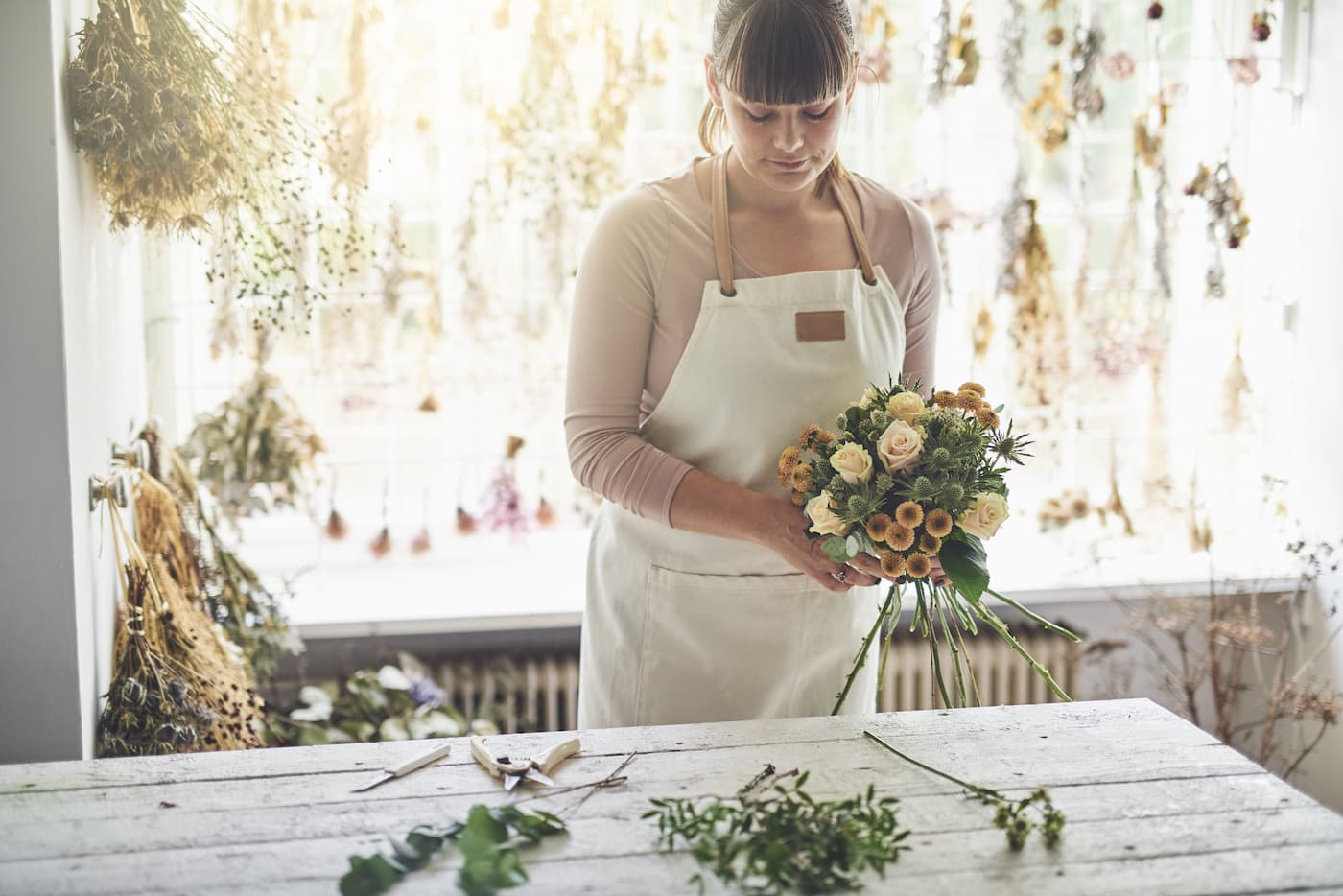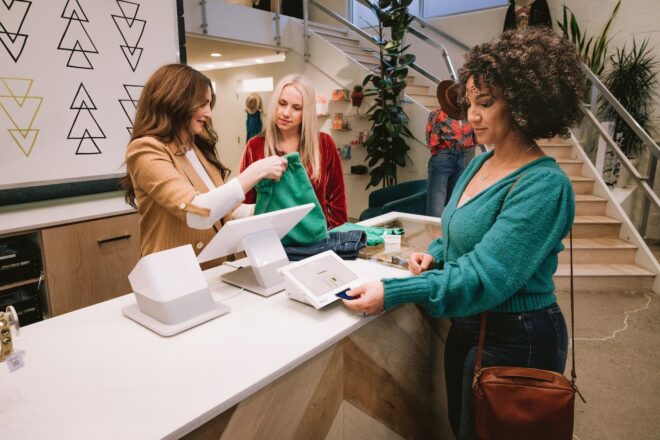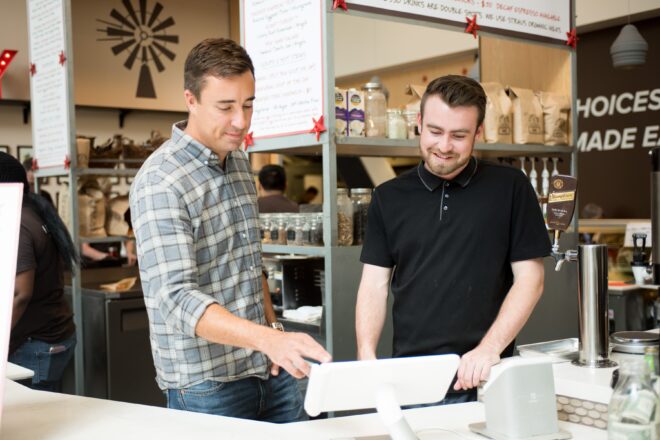How to buy flowers wholesale: 5 tips for finding the right supplier
Editorial Team
6 min read
Running a small florist business can be a rewarding venture, but it’s not without its challenges. In a previous article, we discussed the 5 apps that every florist needs when navigating this industry.
In this article, we dive deep into the world of flower wholesalers from how to buy flowers wholesale to where to order wholesale flowers. Flourishing in this industry starts with finding the right flower wholesale supplier. The last thing you want is to have your flower supply come in wilted or at the end of their bloom.
Finding a supplier who can consistently provide high-quality flowers at a reasonable cost can help you build a trusted shop in your community. If you’re finding yourself spending more time than you would like, exhausting every possible avenue of research, from attending industry events to scouring directories and searching online, we’re here to help.
We have compiled some tips that will simplify the process and help you find your match in a fraction of the time.
What to look for in a wholesale flower supplier
Wondering where to buy flowers wholesale? Finding flowers wholesale can be relatively easy. You can search the internet. You can try word-of-mouth with other florists. Choosing the right one to fit your unique business needs and price point is another challenge altogether.
When you’re looking for a wholesale flower supplier, it’s important to consider:
- Reputation and reviews: You want a wholesaler you can depend on. Spend some time learning about other florists’ experience working with them. There are many ways of going about this from asking other florists in your community about where they order wholesale flowers from to reading reviews online and even looking the company up on social media sites such as Twitter, TikTok, or Instagram. A lot of times, you can find honest feedback in the comments section under their posts or on chat boards. See what people are saying about the wholesaler’s reputation and reliability. Do they consistently ship flowers that arrive on time and are fresh? How have they navigated challenges or issues that have come up? How is their customer service? Are there easy to find communication methods you can reach out to in case anything goes wrong?
- Product range: When it comes to buying flowers wholesale, you are going to want to stock your florist shop for success, and that means finding a wholesaler that provides a variety of quality flowers and products at any given time. It can also be helpful if they guarantee their products—for example, will they replace any damaged goods within 24 hours? Research potential wholesale suppliers’ selection of flowers, vases, and other related products to see if their range is far reaching or more limited. Are there certain types or colors available only through them (and therefore unavailable elsewhere)? Does their supply vary significantly season by season?
- Price: Even if you find the perfect wholesale supplier that checks all your boxes, if their price isn’t right, then it’s not going to be a good fit for your business. And “right” doesn’t always mean “cheapest.” You’re not saving money in the long run if the quality of flowers isn’t great and you have to keep reordering your stock. Look for the sweet spot—a price that fits your shop’s financial model without jeopardizing overall quality. Spend some time comparing different wholesale suppliers’ price points. This will give you an idea of typical costs, as well as how competitively priced each supplier is.
- Delivery: Lastly, make sure your wholesale supplier can keep up with your shop’s demand. When you order wholesale flowers, you want a supplier with reliable, quick delivery times. You can even try out a couple of different wholesalers to see which one’s delivery is most efficient. You never want to turn customers away because your supplier’s delivery time is too slow.
How to build a relationship with a floral wholesaler
Building a good relationship with your supplier can help you get the most out of your investment and help ensure that the flowers you purchase are extra fresh and beautiful. Here are some tips on how to build one:
- Meet with your floral wholesaler as soon as possible—in person, ideally. That way, both of you can learn about each other and make sure you’re compatible business partners before making any commitments or spending money on inventory.
- Get to know suppliers’ team members as well—they can be key sources of information when ordering flowers. Ask them questions like: “How long have they worked here? How many orders do they handle per week, month, season, etc.?”
Do’s and don’ts of buying flowers wholesale
DO:
- Use a florist POS system that can track your inventory, manage your purchases, and stay organized.
- Price your products based on what the market will bear rather than just splitting cost with the wholesaler (a common mistake).
DON’T:
- Assume that you can make a profit on everything you sell. Know your supplier’s markup, and don’t assume your customers will pay more than that.
- Buy more than you need or can resell. Manufacturers often offer big discounts if you buy in bulk, but they also want to see those products go out the door as quickly as possible.
How to track and manage your inventory
Tracking and managing your inventory is an important part of running a successful flower business. With the right tools, you can easily keep track of how much product you have in stock at any given time and make sure that you order more when necessary. A good inventory management system can help take the stress of this off your shoulders and help you run your business by automating your inventory and tracking sales for you.
Knowing how much product you have on hand will help you handle the surprise of a rush in sales or during a slow period. It also helps prevent overbuying (which wastes money) or underbuying (which means running out of stock and losing customers).
How to price your own products
The first step to pricing your own products is to determine each one’s individual cost. Add up all of your expenses, including labor and materials, then subtract that sum from your total revenue. The resulting number will give you an idea of how much profit you’re making on each item sold.
Next, look at other similar businesses in your area or industry and compare their prices with yours (you can do this either by visiting their websites or calling them). If there are no direct competitors selling similar items within driving distance from where you live or work—or if those competitors aren’t selling enough volume for them to be worth worrying about—then base these benchmarks on national averages instead. For example, if there isn’t another florist within 50 miles but there’s an average price difference between local growers’ prices and wholesale ones nationwide ($2/dozen), then adjust accordingly based on how many roses will fit into a bouquet (usually between eight and 12).
Once those numbers are set up correctly according to both customer satisfaction level requirements and market comparisons, then you can start thinking about running your business and reaching more customers.
Other articles you may like
- 3B’s Flowers
- How to start and grow a floral business
- Green-thumbed entrepreneurs share their wisdom on growing a business
Related Posts
New business owner guide to recruiting for retail positions
5 reasons Clover merchants use Time Clock by Homebase
Popular Topics
Stay in touch
Sign up and learn more about Clover.
Thank you for your subscription!
More posts about starting a small business
eBook





